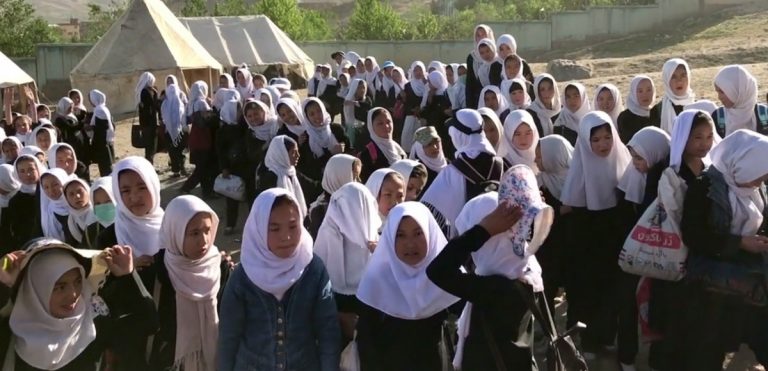
Afghanistan may have been war-ravaged since the United States invaded the country in 2001, but there is another war being waged: that to educate its girls.
Human Rights Watch states in a new report that sixteen years after the US first launched military action to oust the Taliban, two-thirds of girls still do not attend school. The statistics are shocking: 41 percent of all schools in Afghanistan do not even have buildings.
A recent report from development organisation ONE showed that Afghanistan had the highest rate of gender disparity in the world as of 2014 – with only 71 girls in primary school for every 100 boys.
“I Won’t Be a Doctor, and One Day You’ll Be Sick”: girls' education in Afghanistan, still a huge challenge https://t.co/Wy6Xy9keHu
— Tobias Thyberg (@TobiasThyberg) October 18, 2017
HRW notes that “millions of girls who would not have received any education under the Taliban now have had some schooling.” Nevertheless, it says, this is a “good beginning, not a completed task.”
“I moved to Kabul in 2007. Every afternoon hundreds of girls, in black uniforms and white headscarves, poured out into the street near my house,” reflects Women’s Rights senior researcher Heather Barr.
“But things changed. The conflict escalated in ways that reached even the bubble that expats largely lived inside. I left in 2013, feeling cynical and hopeless.”
Despite the removal of the Taliban – which had outlawed almost all education for women and girls during its five-year rule from 1996 – education of girls remains limited by discriminatory attitudes by both government and community members, child marriage, violence, poverty and child labour.
Afghanistan faces a dire lack of infrastructure, teachers and educational supplies, says HRW.
The organisation recommends a number of interventions, including enforcing compulsory education, allowing students to enrol at any time of the year, abolishing uniforms and strengthening anti-corruption mechanisms within the Education Ministry.
As for international donors and NGOs working in Afghanistan, HRW recommends they continue to “fund girls’ education at current or higher levels until the government is able to devote sufficient government revenue to education to maintain the current system and expand it in order to meet the goal of universal access to primary and secondary education.”
The SDGs targets that by 2030 all girls and boys complete free, equitable and quality primary and secondary education.. #girlchildcounts
— A F O L Á B Í (@AfolabiWills) October 11, 2017
Ongoing conflict poses the largest threat to the education of female, and indeed male, Afghans.
Civilian casualties from Afghan and American air strikes have risen more than 50 percent since last year, the United Nations said on Thursday, as troops increase attacks on militants under a new strategy announced by US President Donald Trump in August.
As of the end of September, at least 205 civilians had been killed and 261 wounded this year in air strikes in Afghanistan, UN investigators said in a quarterly report.
More than two-thirds of the civilian victims were women and children, the report said.
Additional reporting by Reuters
Liked this? Then you’ll love…
Girls have the least chance to be educated in Afghanistan, Pakistan
Calls for Britain to join Safe Schools Declaration to protect education from bombs







